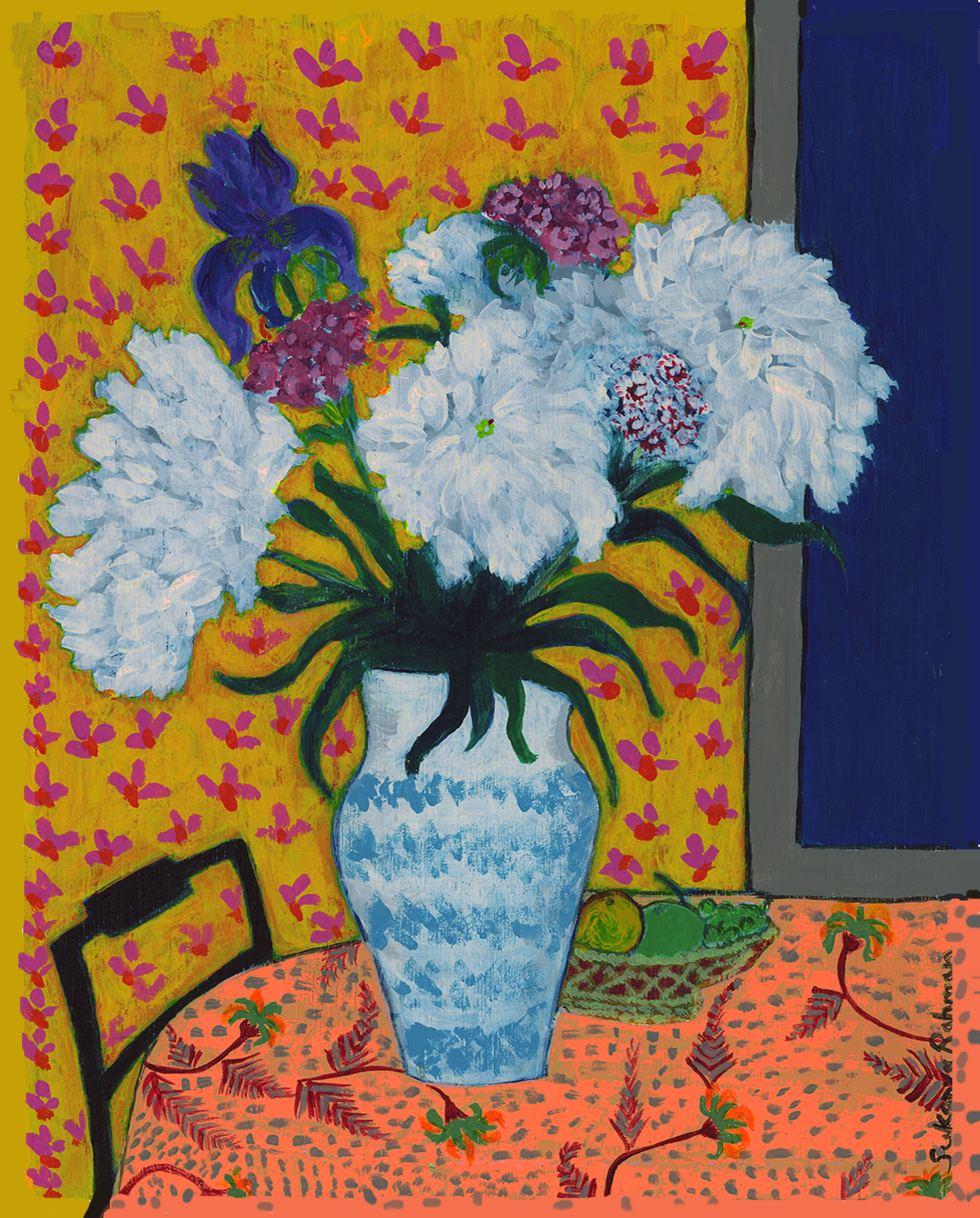Malabar Coast Fish Curry
This summer I received three requests in one week for my fish curry recipe. I panicked since I didn’t have a recipe. While I do have some favorite cookbooks I use as a guide, I cook mostly by instinct and try to recreate dishes I’ve enjoyed eating particularly in someone’s home. I once asked a neighbor in Delhi to give me her recipe for curried chickpeas. My neighbor turned up the next day with her recipe in hand and a freshly cooked pot of chickpeas. She had no recipe so she took down notes as she prepared the dish from scratch.
The recipe I have put together is an attempt to recreate one of the most fantastic fish curries I have ever eaten. It of course wasn’t called ‘fish curry’ – it was probably something unpronounceable like ‘Meen Varatharacha Charu.’
Some years ago my husband, two sons and I were winding up a four month stay in South India with a short holiday at a beach resort by the Arabian sea in Kerala, on India’s south west Malabar coast. While exploring the port city of Cochin (now Kochi), we ended up stopping for lunch at a hole-in-the wall restaurant by the waterfront, drawn by the enticing aromas emanating from within. The first surprise when we entered the packed restaurant was to discover several Indian women seated alone drinking bottles of beer with their meal. Not surprising really when you think about it. Kerala is a matrilineal society. The first church, synagogue and mosques were established in Kerala by people fleeing religious persecution and by spice traders. The Dutch had come, the British, the Portuguese, the Chinese, the Arabs, Jews from Baghdad. All these cultures have melded together over the centuries to give the city a cosmopolitan air. The first communist government in India was elected in Kerala. The Malayalees, or Keralites, are among the most educated people in India with a literacy rate of over 90 percent.
The second surprise was the succulent, incendiary fish curry cooked in coconut milk and served to us on banana leaves. The meal cost next to nothing and was much more delicious than anything we had eaten at the fancy resort restaurants. More than that the boys serving us kept piling on extra helpings of the fish and mounds of rice and vegetables. I ate with great concentration, trying to distinguish the different ingredients, and memorize the taste.
What I have tried to recreate is a simple version of those flavors with ingredients that are easily available and using short cuts such as canned coconut milk. I’m casual about measuring ingredients when I cook. The proportions of ingredients listed are approximations. Cooking for me is like painting, mixing different colors each time and getting a different result each time. The secret is using truly fresh fish. You can use the sauce as a base for any seafood. Try something different each time. Here is the recipe I have put together for you to try and to experiment with.
Malabar Coast Fish Curry
2 lbs. Fresh cod fish filets cut in chunks (or haddock, shrimp or lobster meat)
1 Medium onion thinly sliced
1 Medium onion roughly chopped
2 Inch piece of fresh ginger peeled and roughly chopped
6 Cloves of garlic peeled and smashed with flat part of a knife
1/2 Tps turmeric powder
1 Tbs coriander powder
1/2 Tps (or according to your level of tolerance) cayenne powder
2 Fresh green chilies (jalapeño or serrano) sliced length wise (adjust to your taste)
2 Large tomatoes chopped
1 Can coconut milk (look for brand without preservatives)
1/2 Tps. tamarind paste (Tamcon is a commercial brand) if available, or two tbs. fresh lime juice.
3 Tbs Coconut oil, olive oil or vegetable oil of your choice.
3 Tbs. fresh cilantro chopped.
Salt to taste.
1. Place 1 roughly chopped onion, the garlic and the ginger in the jar of an electric blender or food processor with just enough water to grind to a paste.
2. Heat the oil in a heavy-bottomed pot over a medium flame and sauté the onions, stirring about 10 minutes until they are soft and browned but not burned.
3. Add the turmeric, coriander and cayenne and sauté for about 10 – 15 seconds. Add the paste from the blender and cook over low heat, stirring constantly until the oil separates from the masala (paste), for about 5-7 minutes. Add chopped tomatoes and cook until they are soft.
The masala can be prepared upto this point and stored in the refrigerator for a day. (If I’m preparing an ambitious dinner I freeze the masala and defrost and add steps 4 and 5 the day of serving).
4. Add the coconut milk and the tamarind or lime juice. Bring to a boil and cook covered over low heat for approximately 10 minutes. (The sauce should be thick, you might not need the entire can of coconut milk.)
5. About 10 or fifteen minutes before serving bring the masala to a gentle boil. Add the fish and cook for about 5-7 minutes until opaque and cooked through.
Sprinkle with chopped cilantro and serve over steaming baasmati rice.
(Some cookbooks I refer to are Madhur Jaffrey’s ‘Invitation to Indian Cooking‘ and ‘A Taste of India,‘ and ‘The Bombay Cafe’ cookbook by Neela Paniz. I also refer to an assortment of obscure cookbooks I picked up in India which I won’t list here since they have instructions such as sealing pots with dough and placing glowing hot cow dung cakes on the lid – somewhat impractical for average American kitchens). If you are in the Napa area check out Neela’s Contemporary Indian Restaurant .
Sukanya Rahman © first published in Art Insider 05/23/2010
Copy Right
All Rights Reserved ©Sukanya Rahman 2011
Categories





